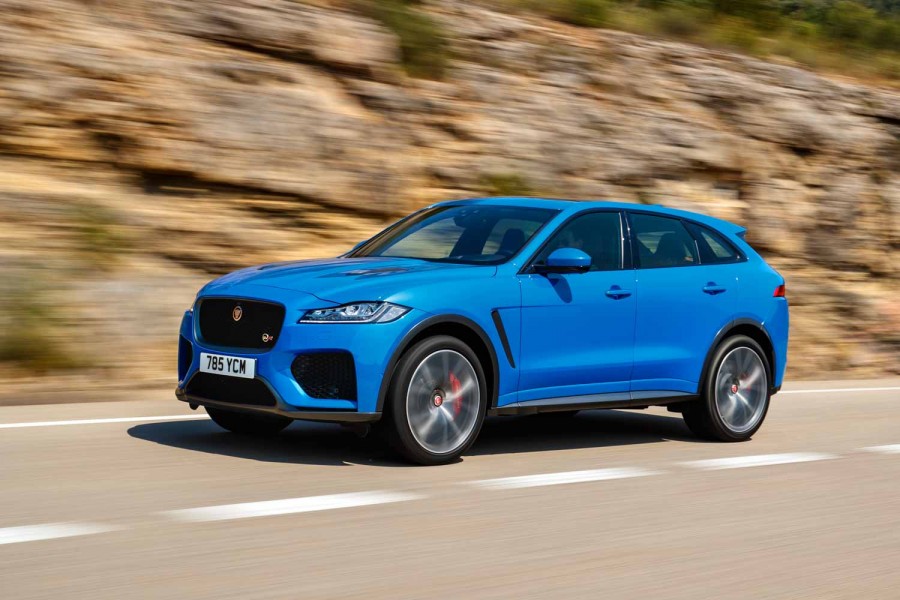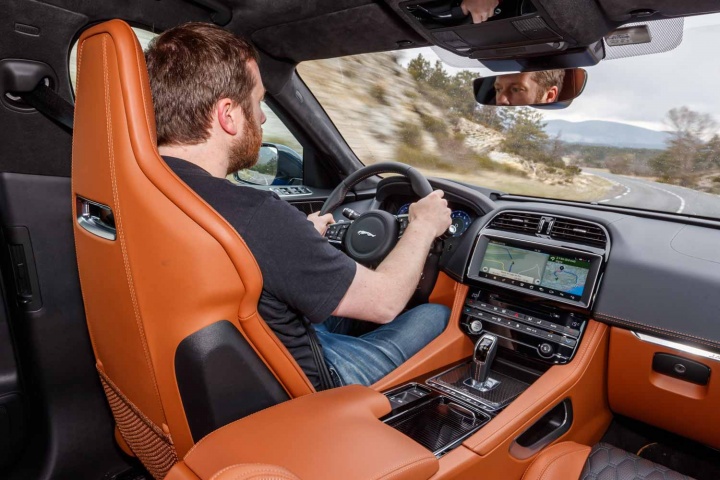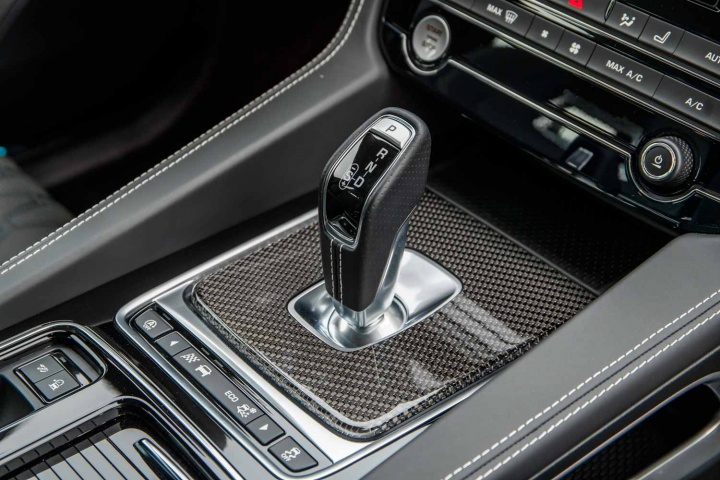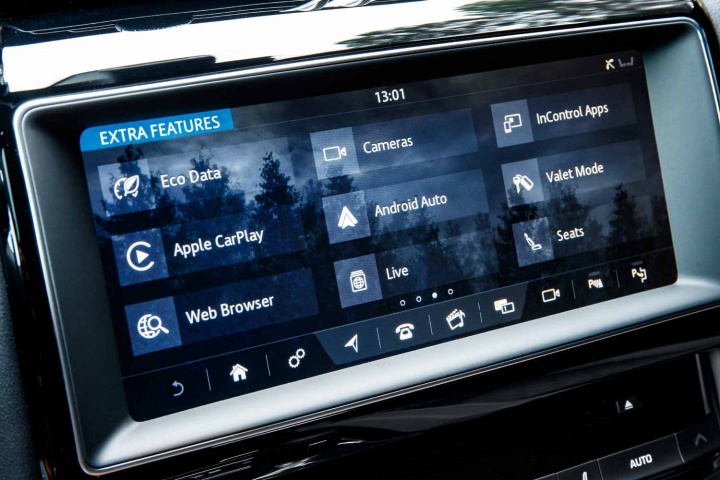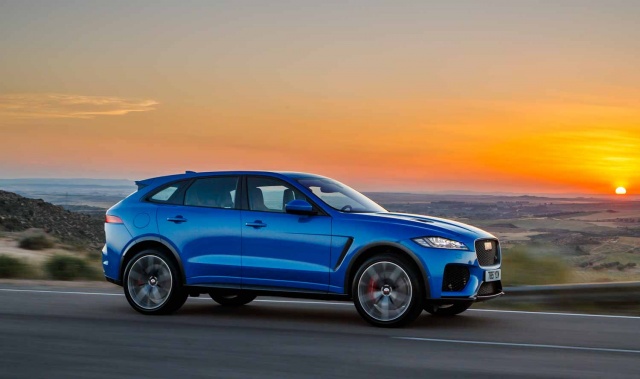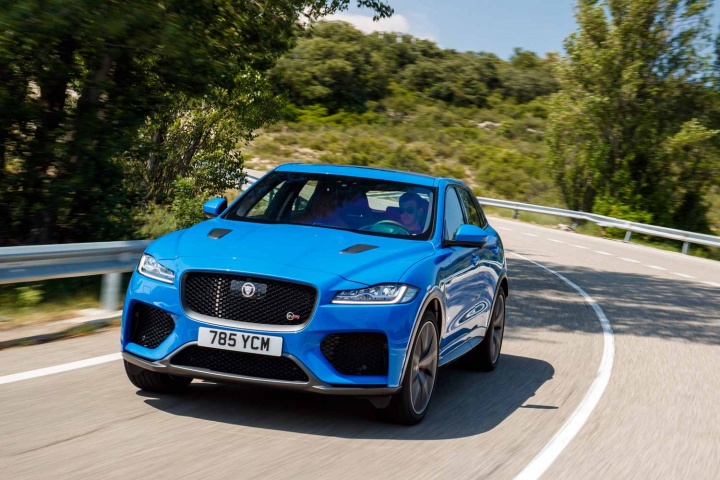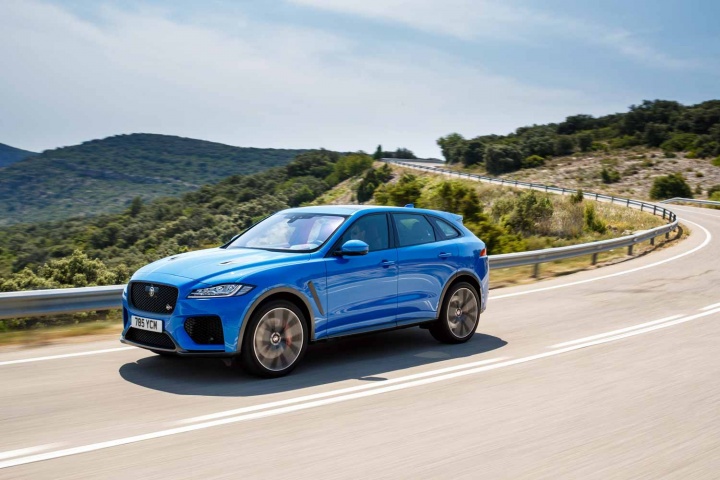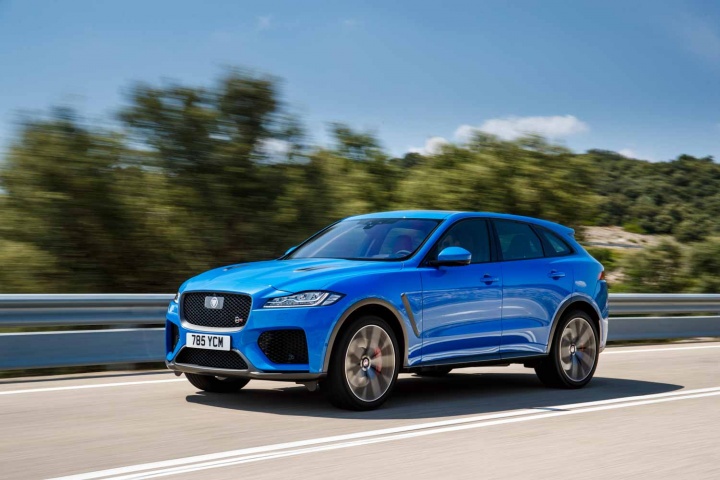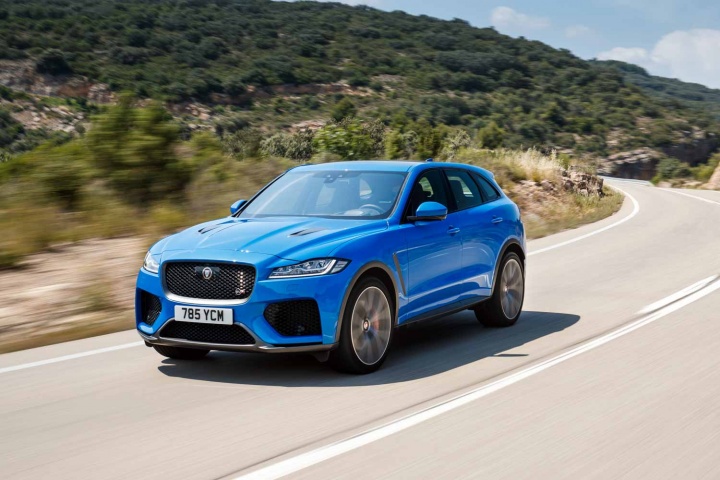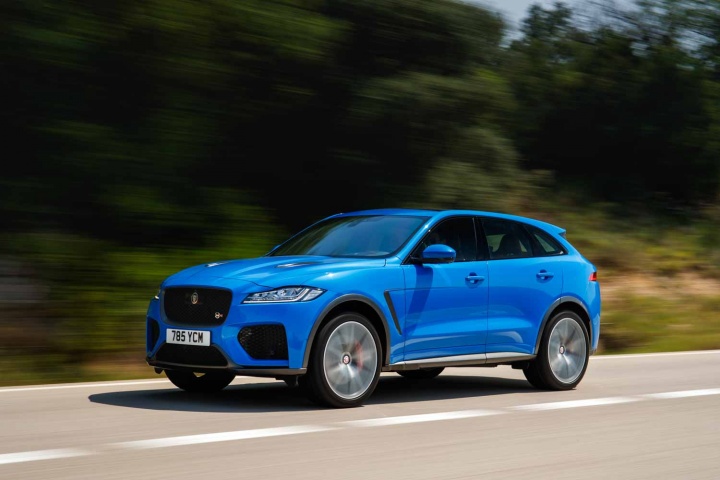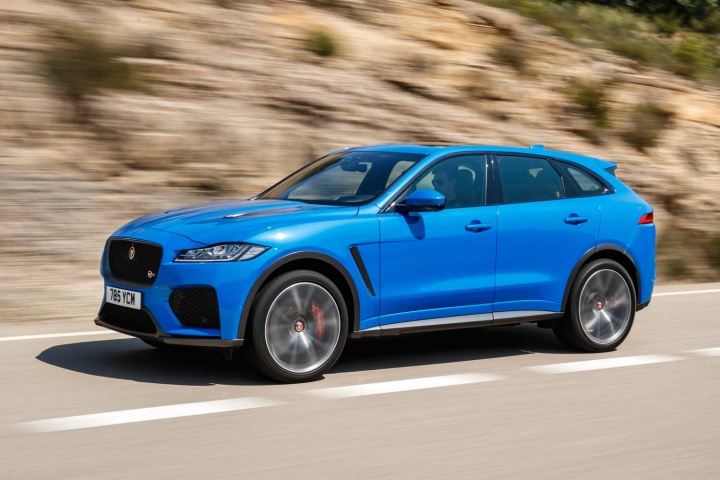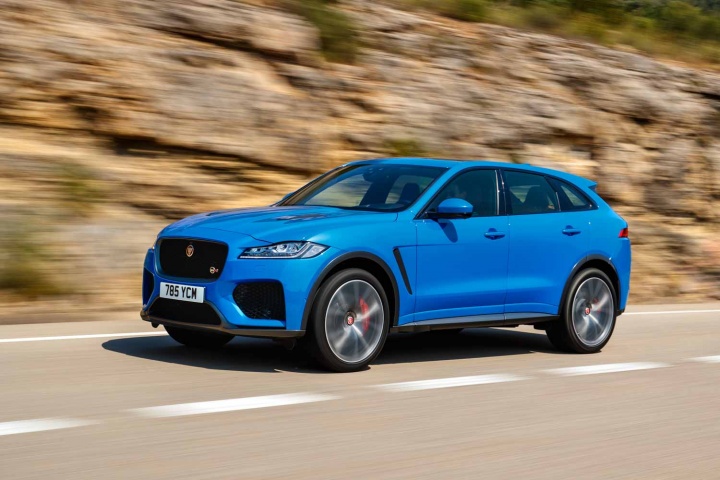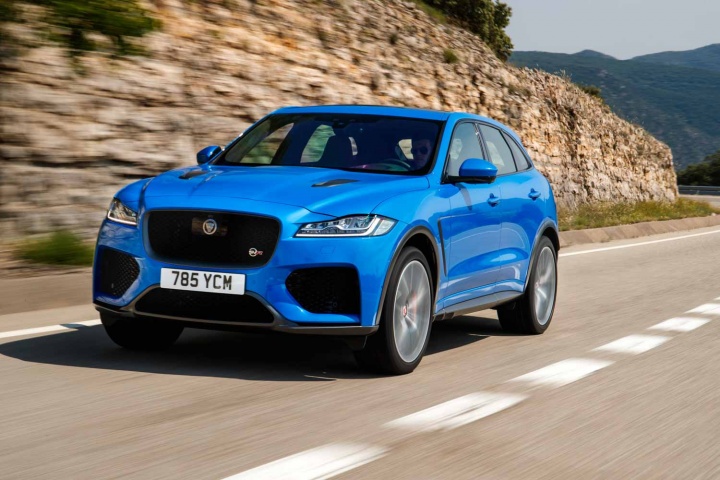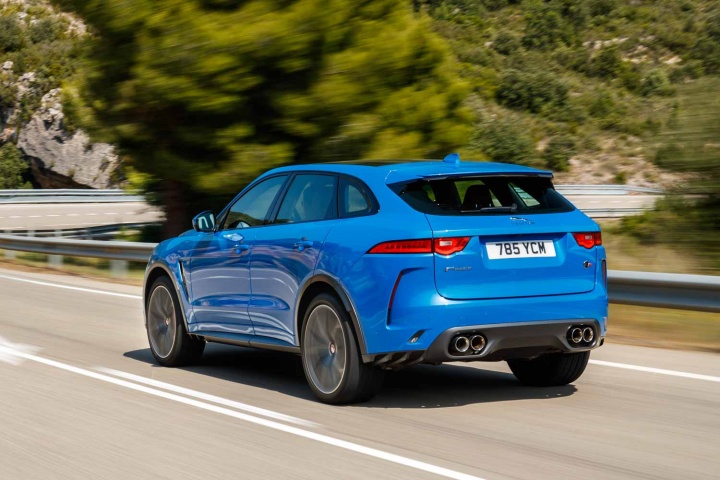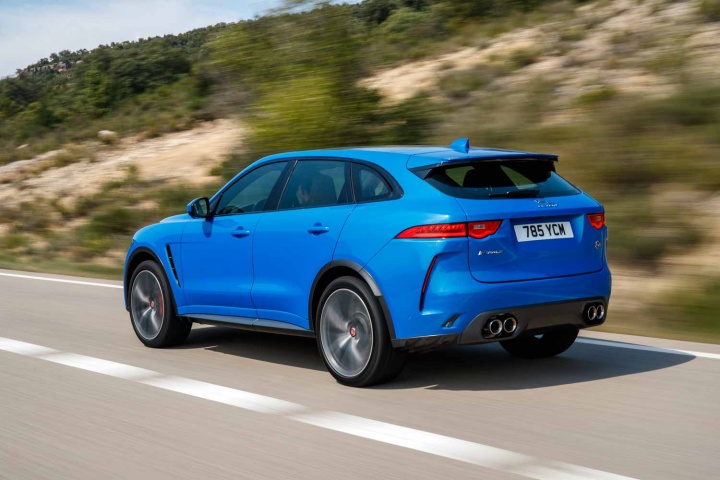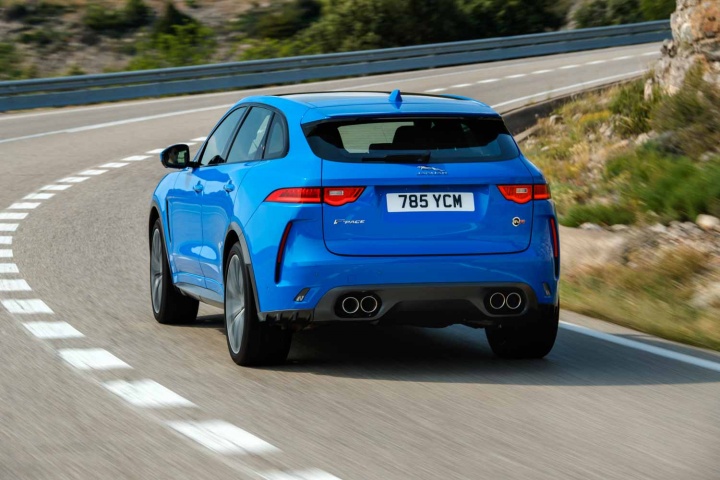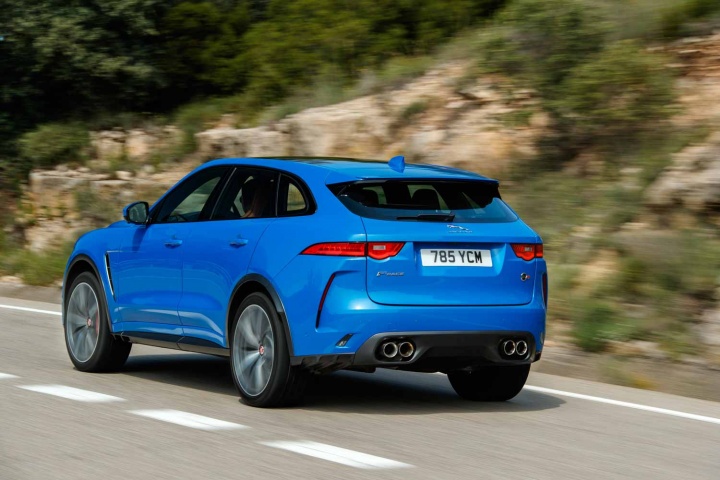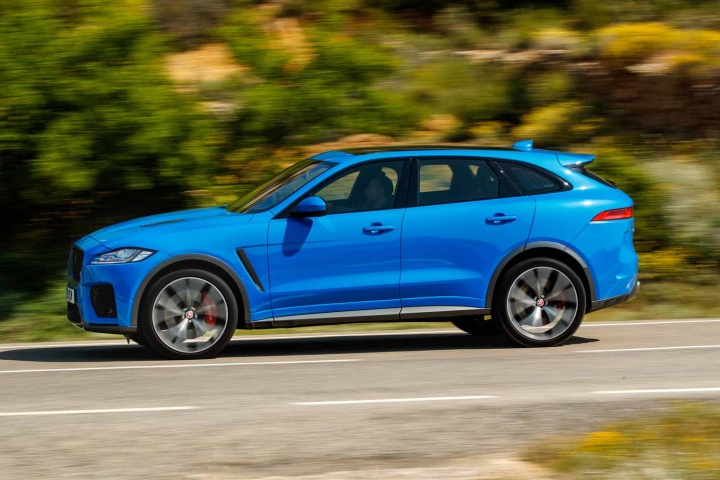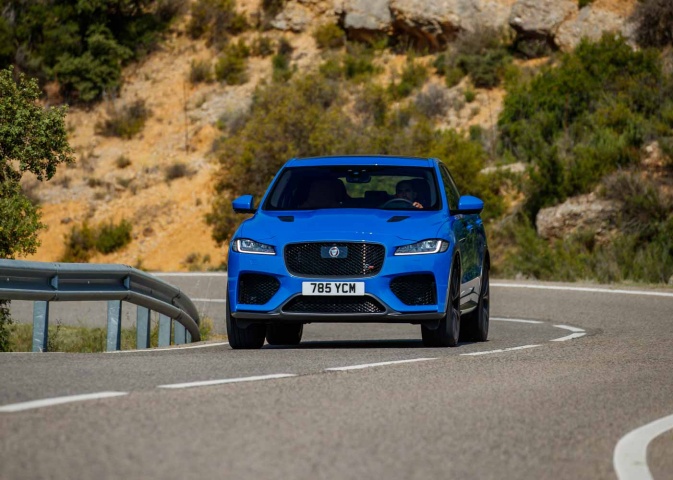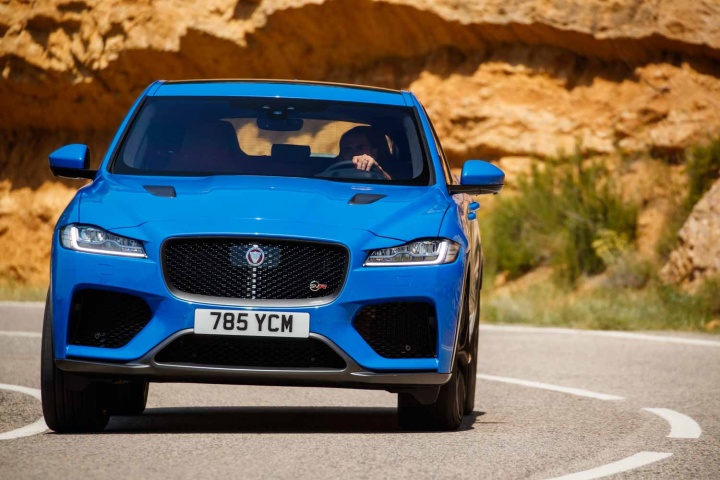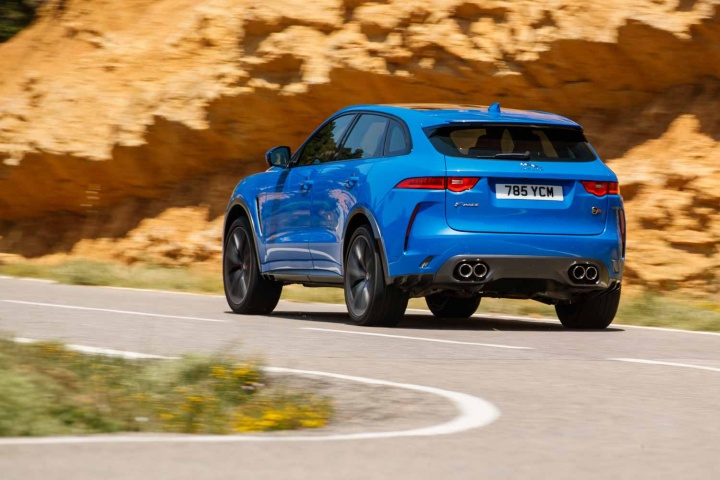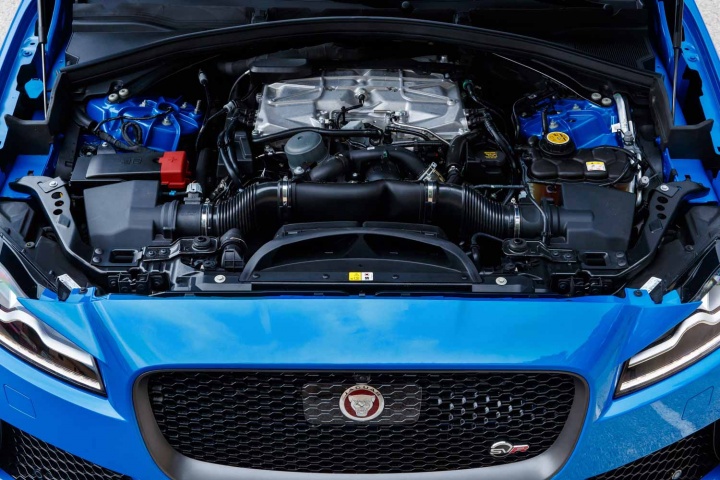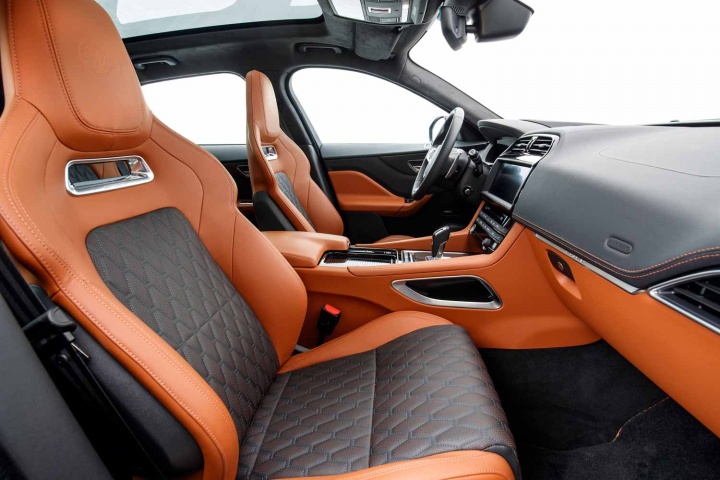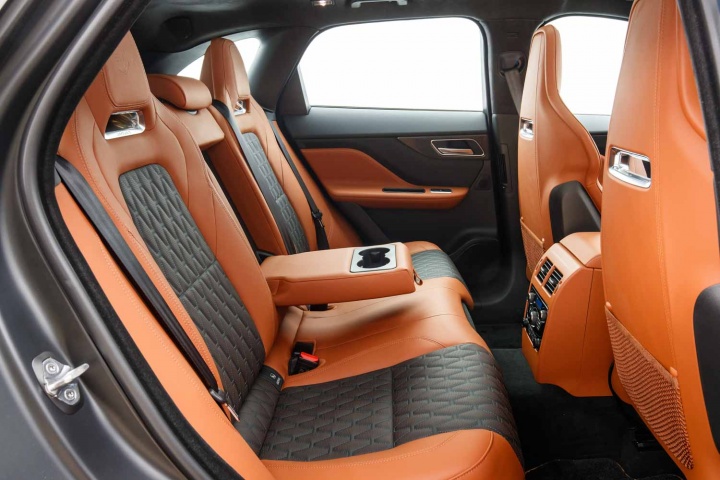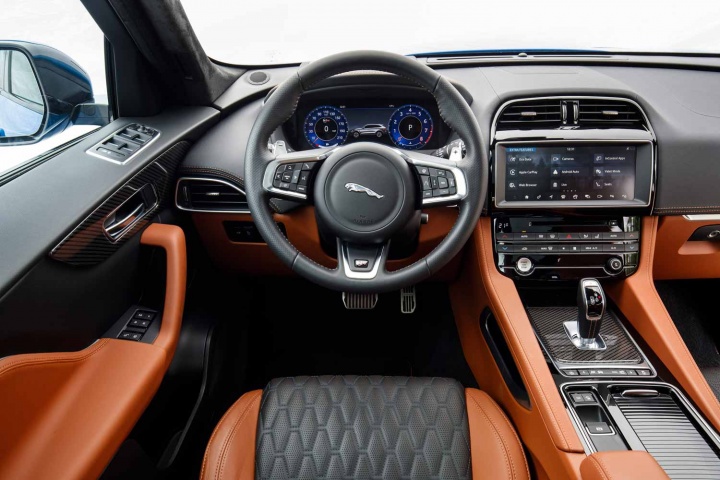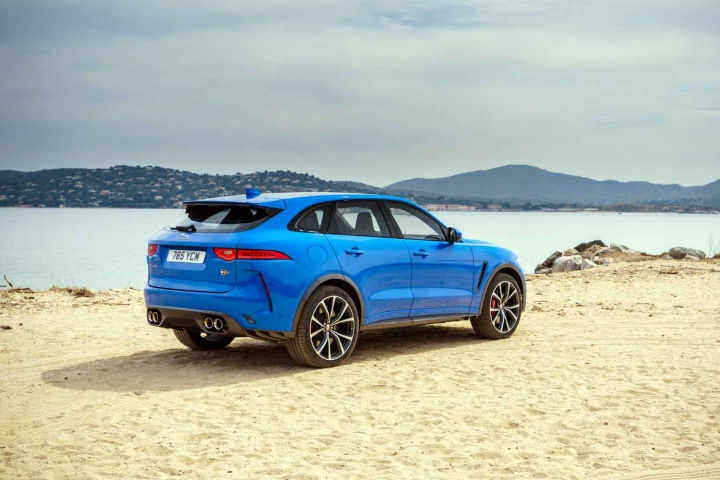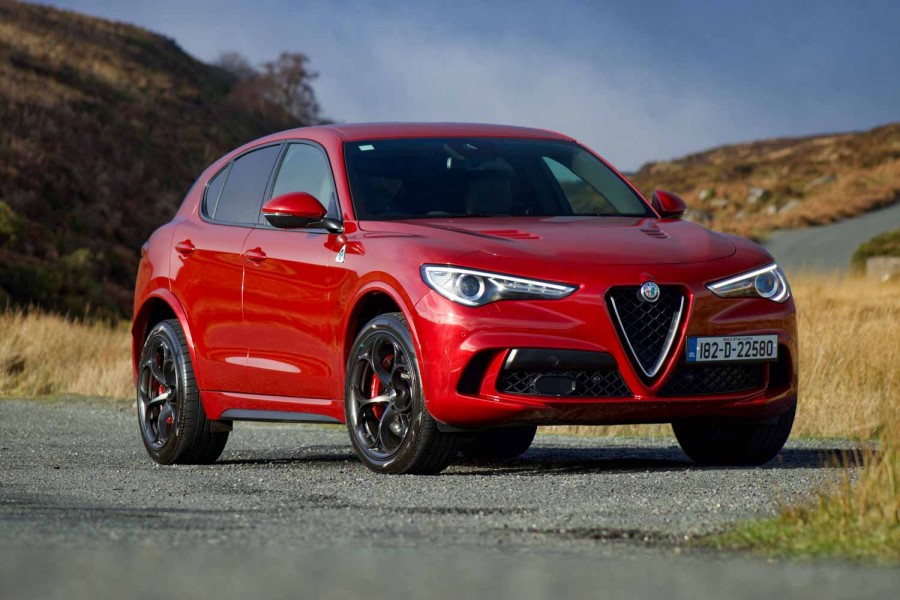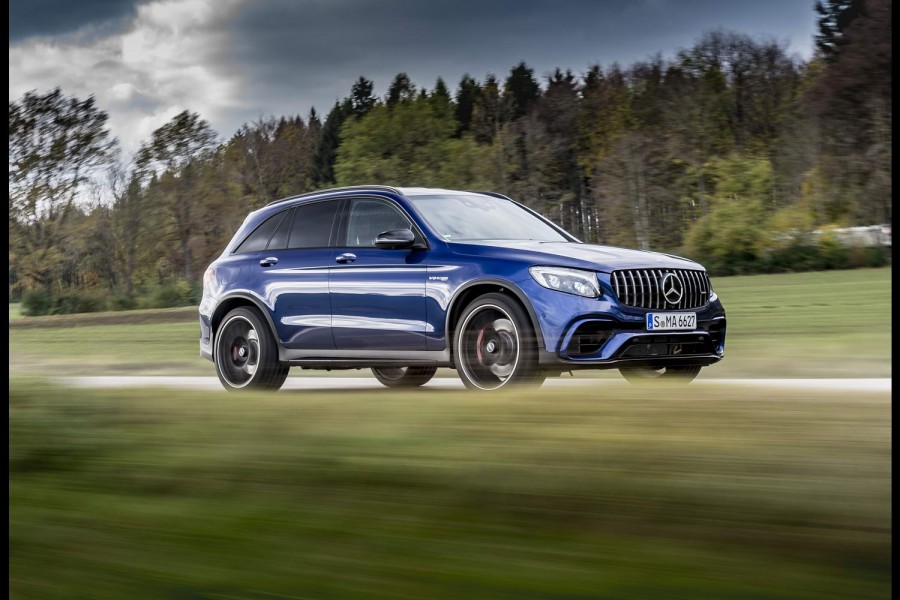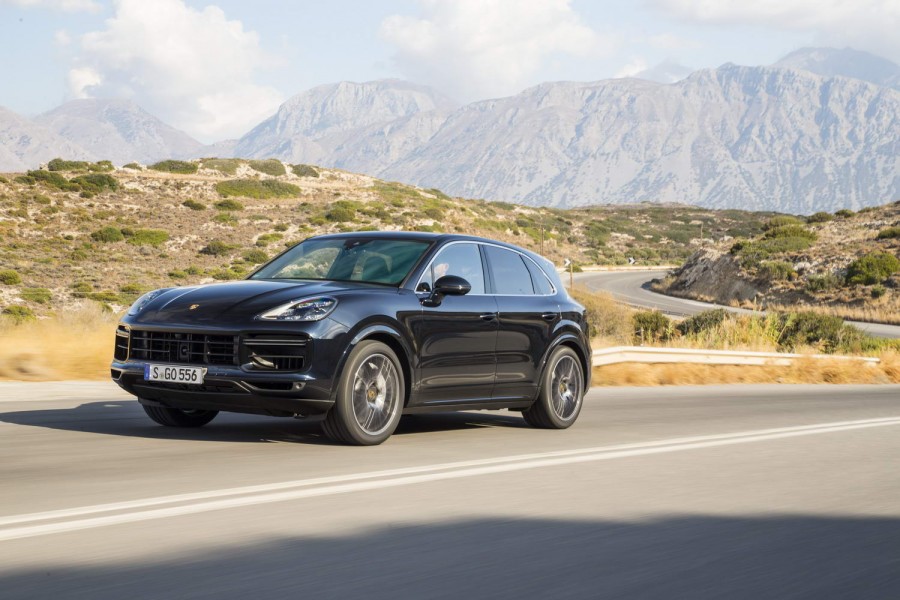If you want to drive an SUV, but also want seriously high performance, the Jaguar F-Pace SVR will pique your interest thanks to its 550hp supercharged V8. But for all that brawn it carries with it some finely tuned handling and a ride quality that makes it more capable than you might expect.
In the metal
There's little chance of mistaking the 550hp Jaguar F-Pace SVR for other models in its range. Having that supercharged V8 shoehorned into means that it needs additional cooling. So the bonnet gains two vents to help draw out heat from the engine bay, while enlarged apertures in the front bumper help feed the additional cooling requirements. Some of that airflow through the side of the front bumper flows through the wheelhouse, where it first helps to cool the 395mm front brakes. That air then exits through the breather on the wing behind the wheel, reducing air pressure, and therefore lift, at higher speeds. The standard wheel is a 21-inch rim, and Jaguar offers a forged 22-inch wheel as an option.
The performance image continues around the back of the car, where there's a new spoiler to improve high-speed stability. A quad tip exhaust weighs 3.8kg less than a standard F-Pace system and features an active valve that continually adjusts to help gas flow and ensure a more consistent sound. There is also a button on the centre console to open up the exhaust permanently, for when you're in Comfort mode otherwise.
The rest of the interior gets performance-themed garnish in the form of slim sports seats up front and modest flashes of glossy carbon fibre inserts (a €1,705 option). Unlike the updated Jaguar XE, which gets the steering wheel from the I-Pace, the F-Pace SVR retains the old-style steering wheel. Perforated leather on the sides does feel nice, but the multifunction switchgear looks a bit dated and isn't the most intuitive to use. Behind the wheel, the shift paddles are well sized and have a lovely action to them.
As for the rear, there is a fair amount of comfort and room for two, but the third occupant in the middle loses out on space due to the shape of the back of the centre console and transmission tunnel. The outer two seats mimic the look of the front sports seats, while the boot capacity is useful at 650 litres.
Driving it
There aren't enough cars that are supercharged these days. And as advanced (complicated) and efficient as turbocharging is becoming, it doesn't deliver that same instant 'always on' feeling in a large capacity engine the way that a supercharger does. Plus, there's the sound. That mechanical whine as air is screwed into the engine, mixed with its V8 soundtrack, is intoxicating stuff. You find yourself planting the throttle on every straight between bends purely to get another aural hit.
Peering under the vented bonnet reveals an engine bay with very little empty space due to the 5.0-litre V8 being squeezed in. There's quite a bit of extra hardware, and therefore weight, but in all the SVR only weighs some 70kg more than a regular F-Pace, and that includes the larger fuel tank, increasing capacity to 82 litres. The latter is a helpful addition given the combined economy figure of just under 24mpg. That makes it marginally thirstier than rivals like the Alfa Romeo Stelvio Quadrifoglio and Mercedes-AMG GLC 63 S. Still, you don't buy a big dog unless you can feed it.
What is most surprising about the F-Pace SVR, aside from its sheer pace, is how well it manages itself on the road. From body control to handling and steering, you can tell that some real work went into honing it. Overseeing that was lead engineer, Ross Restell, a former Lotus man, with meticulous attention to detail and a genuine passion for making cars handle properly.
The SVR can send power to all four wheels, usually with a 30:70 front-to-rear bias, but in its sportiest setting, 90 per cent of the drive goes to the rear axle, which uses an electronic locking differential to divide that up between the back wheels. In more challenging conditions, power is split evenly between both axles. Body lean is reduced further over the standard car, but it isn't the case of merely adding firmer springs at each corner. Rotating chassis bushes, asymmetric engine mounts and softer, but shorter, bump stops have all brought gains in the handling department.
What that all translates into is a car that handles weight transfer very well. As you feed in more steering angle going into a corner, you can sense the suspension begin to load up, but it does so in a very natural and progressive way. Meanwhile, changes to the rear suspension serve to control the unloaded back wheel, ensuring the wider tyres maintain contact with the road.
Steering response is immediate, perfectly weighted and it handles direction changes with aplomb. This car isn't just about going fast in a straight line. During more spirited driving you can feel the power shuffle around and even though there's no rear-wheel steering, how it rotates in a corner makes you want to brake later to increase the angle of the corner just because you can. It's no coincidence that the head of Special Vehicle Operations (SVO), Jamal Hameedi, who formerly ran Ford Performance, chose the same driving routes for the media launch of the SVR as those used when Ford launched the Fiesta ST.
When you're finished canyon carving and torturing the twisty stuff, the F-Pace SVR is equally proficient at delivering a comfortable ride over longer distances. With so much power on tap, the engine is hardly strained at motorway cruising speeds and in comfort setting its gearbox eases into eighth gear while the ride remains firm, but damped well enough to not become jarring or tiring. Even the sports seats provide reasonable comfort over a few hours.
What you get for your money
With a starting price of €137,285, the F-Pace SVR is more expensive than its direct rivals and, while it is great to drive, that's still a hefty premium to pay. The standard equipment includes 21-inch alloy wheels and LED headlights, in addition to the exterior styling mentioned earlier, while inside it features a Meridian sound system. There's a total of six roof options including a sliding panoramic roof with rails.
Summary
The Jaguar F-Pace SVR may be a niche offering, but it's clear that the engineers involved have poured a great deal of effort into making it handle very well for such a big SUV. Yes, it has a stonking great engine in the front, but it's how the chassis lets you exploit that power in places other than a straight line that makes this such an enticing proposition. Spending time behind the wheel of it makes you understand why it was known internally as 'the magnificent beast'.

